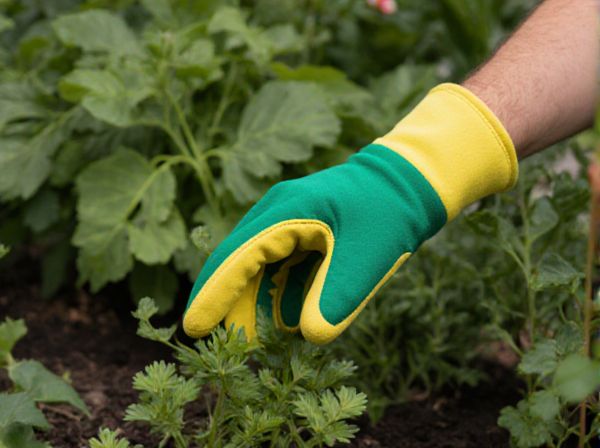
Espalier vs Trellising Illustration
Espalier and trellising are popular methods used to train and support fruit trees and plants, enhancing both space efficiency and yield. Espalier involves shaping trees into flat, two-dimensional forms against a wall or fence, optimizing sunlight exposure and aesthetic appeal. Trellising uses vertical frameworks to guide plant growth upward, providing better air circulation and easier harvesting.
Table of Comparison
| Aspect | Espalier | Trellising |
|---|---|---|
| Definition | Training fruit trees flat against a wall or frame | Supporting climbing plants using a framework of verticals and horizontals |
| Primary Use | Fruit trees (apple, pear) | Vines, vegetables (grapes, cucumbers, beans) |
| Space Efficiency | High - ideal for small gardens | Moderate to High, depends on plant type |
| Sunlight Exposure | Maximizes sunlight on fruiting wood | Improves air circulation and sunlight for climbing plants |
| Maintenance | Requires regular pruning and training | Moderate, regular tying and pruning |
| Yield Improvement | Enhances fruit quality and yield | Supports growth and optimizes harvest |
| Installation | More labor-intensive and skilled work | Relatively easy and flexible |
| Best For | Ornamental and productive fruit trees | Climbing edibles needing support |
Understanding Espalier and Trellising Techniques
Espalier involves training fruit trees to grow flat against a support, optimizing space and sunlight exposure for better fruit production, while trellising uses a framework of stakes or wires to support climbing plants like grapes or tomatoes. Espalier techniques require precise pruning to shape the tree into specific patterns, enhancing air circulation and light penetration. Trellising offers flexibility for various plant types, improving yield and ease of harvest by keeping plants off the ground.
Key Differences Between Espalier and Trellising
Espalier involves training fruit trees to grow flat against a support, creating a two-dimensional growing structure that maximizes space and improves sunlight exposure. Trellising supports various climbing plants and vines using vertical or angled frameworks, focusing on plant support rather than precise shaping. Espalier emphasizes controlled growth patterns and aesthetics, whereas trellising prioritizes functional support for fruit production and ease of harvest.
Best Plants for Espalier in Edible Gardens
Best plants for espalier in edible gardens include apple, pear, and fig trees, which thrive with this training technique and allow for increased fruit production in limited space. Espalier enhances air circulation and sunlight exposure, improving fruit quality and reducing disease risk. Culinary herbs such as rosemary and thyme can also be espaliered along walls to optimize garden space while providing fresh ingredients year-round.
Ideal Crops for Trellising Systems
Trellising systems are ideal for growing climbing and vining crops such as grapes, tomatoes, cucumbers, and pole beans, which benefit from vertical support to improve air circulation and sunlight exposure. These crops yield higher quality fruit and reduce disease risk when trained on trellises due to better airflow and easier pest management. Trellising also maximizes space efficiency in small gardens or orchards, making it suitable for intensive edible crop production.
Space Efficiency: Espalier vs Trellising
Espalier maximizes space efficiency by training fruit trees flat against walls, making it ideal for narrow gardens and small yards. Trellising supports vines or climbing plants vertically, optimizing vertical space but often requiring more ground area than espaliered trees. Espalier is generally more space-conserving due to its two-dimensional growth pattern, allowing for fruit cultivation in highly confined spaces.
Installation and Maintenance Requirements
Espalier installation requires precise pruning and training against a flat surface, often involving sturdy frameworks like wooden or metal supports to guide branch growth. Trellising involves simpler setup with vertical or horizontal support structures, allowing more flexible plant growth and easier adjustments. Maintenance for espalier demands regular pruning to maintain its shape, while trellises require occasional tie adjustments and structural checks to support plant weight.
Aesthetic Benefits in Edible Landscapes
Espalier enhances edible landscapes by creating visually striking, flat plant forms that serve as living art against walls or fences, maximizing space with elegant symmetry. Trellising offers vertical growth support, providing an attractive, natural screen or focal point with climbing edible plants like grapes or beans. Both techniques contribute unique aesthetic benefits, elevating garden design while promoting productive, space-efficient food cultivation.
Yield Comparison: Espalier versus Trellising
Espalier training typically results in higher fruit yield per square foot due to the efficient use of vertical space and improved sunlight exposure, promoting better photosynthesis and fruit development. Trellising offers moderate yield benefits by supporting plant growth and facilitating air circulation, but it generally occupies more horizontal space with less fruit density. Studies show espalier systems can increase productivity by up to 30% compared to traditional trellising methods, making them ideal for small gardens and intensive cultivation.
Common Challenges and Solutions
Espalier and trellising both face common challenges such as limited airflow, increased risk of pest infestations, and uneven sunlight exposure, which can hinder fruit development and plant health. To combat these issues, regular pruning promotes better air circulation and sunlight penetration, while the use of insecticidal soaps or organic pest controls reduces infestations. Ensuring proper spacing and training of branches also minimizes disease risk and supports optimal fruit production in both espalier and trellised edible plants.
Choosing the Right Method for Your Garden
Espalier and trellising both optimize limited garden space by training fruit trees or vines vertically, enhancing sunlight exposure and air circulation. Espalier involves shaping trees into flat, two-dimensional forms against a wall or fence, which is ideal for ornamental designs and small urban gardens. Trellising uses sturdy frameworks to support various climbing plants, offering flexibility for larger gardens and diverse crops like grapes, tomatoes, or cucumbers.
Espalier vs Trellising Infographic

 gardendif.com
gardendif.com